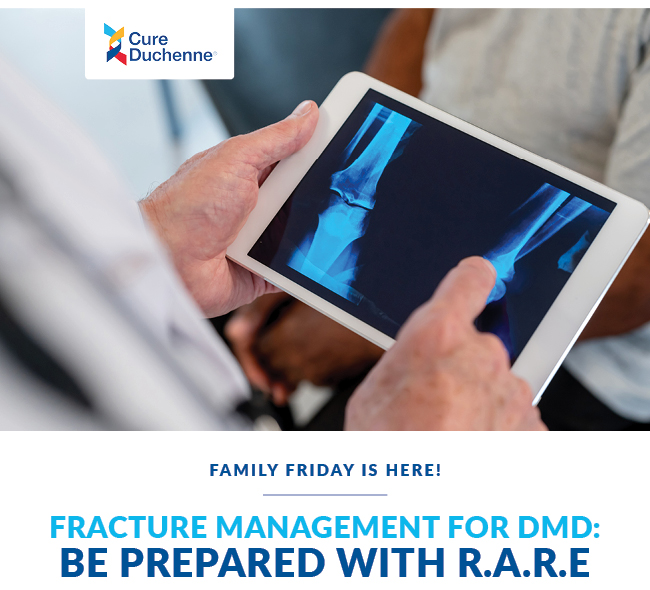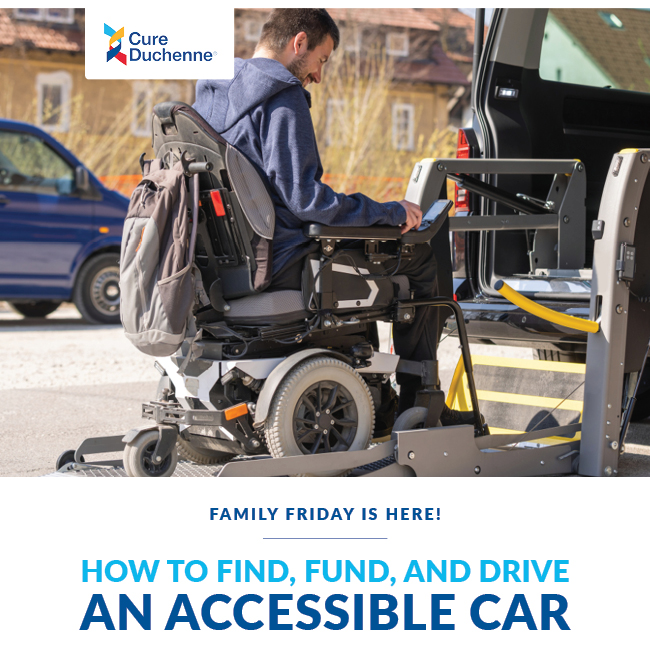Fracture Management for Duchenne Muscular Dystrophy: Be Prepared with R.A.R.E

Dealing with a fracture is a frightening experience for anyone, especially someone living with Duchenne muscular dystrophy, who has weaker bones and is more prone to falling.
Often, you will have to work with emergency room staff who aren’t as familiar with Duchenne and don’t know the signs of fatty embolism syndrome (FES). Then you, along with an orthopedic doctor, will need to decide whether to surgically or non-surgically fix the fracture.
Because an emergency like this can happen in an instant, we want to help you be prepared. Remember the acronym, “R.A.R.E”: Ready, Act, Respond, Engage. That will assist you through the process of navigating a fracture.
Ready
- Get a FREE Medical ID bracelet from CureDuchenne. It is a medical ID that is customizable and also comes prefilled with Duchenne-specific emergency information:
- https://cureduchenne.org/product/cureduchenne-medical-id-bracelets/
- Save this site on your phone browser “favorites” or print these to find them easily if you need them. There are two versions, one for you and one for the Emergency Dept doctors:
- https://cureduchenne.org/care/emergency-guidelines/
Act
- If a fall or an abrupt transfer or collision with a stable object occurs:
- First, assess for any pain or change in functional ability to move
- If pain or a change is noted, immediately visit the Emergency Room
- Provide ER with the emergency documents above
Respond
- Watch for any signs of difficulty breathing, confusion, and/or sleepiness to alert physicians of these potential fatty embolism syndrome (FES) symptoms immediately
- If a fracture is found, ask for orthopedic consultation for treatment options
Engage
- Talk to your doctor to ensure they understand all the nuances of Duchenne. Fractures are managed differently in Duchenne
- If a fracture occurs anywhere other than the legs, treatment will likely follow typical options of protection and support during healing
- If a fracture occurs in the legs of someone who is non-ambulatory, consider these options:
- Non-surgical management including casting at favorable joint positions
- Cast support at a favorable joint position or surgical fixation of the fracture if the person regularly uses a stander or performs other weight-bearing activities
- If a fracture occurs in the legs of someone who is ambulatory, consider these options to return to ambulation sooner:
- If it is a non-displaced fracture, can it be stabilized and begin weight-bearing and standing/walking right away?
- If it is a more complicated fracture, and the person is a candidate for surgery, can it be surgically fixated with minor weight-bearing and walking restrictions?
- If a fracture cannot be stabilized, casting may be required with the goal of returning to weight bearing as soon as possible.
- You can provide your surgeon with this document to assist with decision-making if needed: https://jposna.org/index.php/jposna/article/view/664/799




